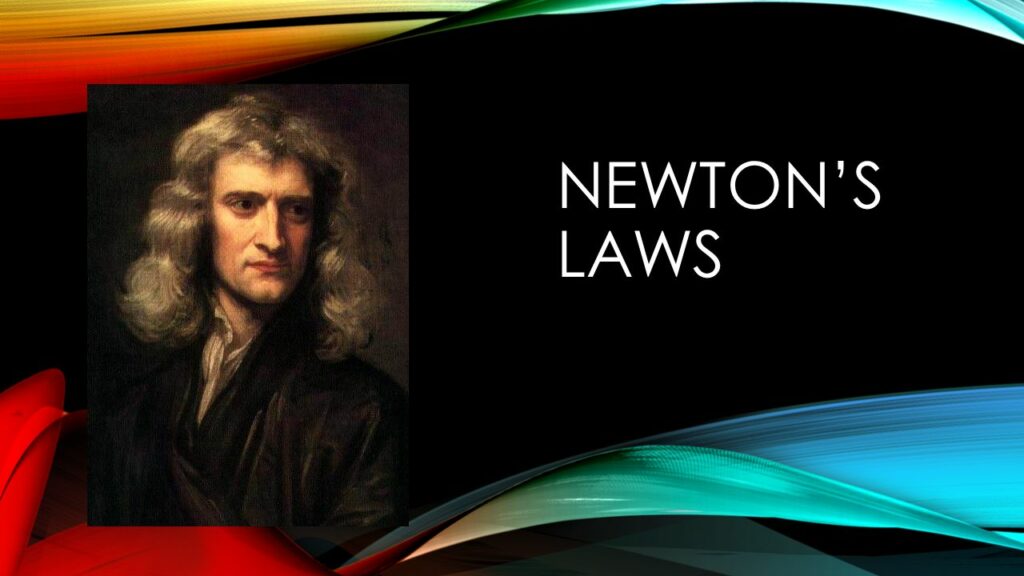Introduction
Sir Isaac Newton’s Laws of Motion stand as pillars in the edifice of classical mechanics, providing profound insights into the fundamental principles governing the motion of objects. In this comprehensive guide, we embark on a journey through the three laws that bear Newton’s name, unraveling their significance and exploring their applications from the macroscopic to the celestial.
Newton’s First Law: The Law of Inertia
Understanding Inertia
Newton’s First Law states that an object at rest will remain at rest, and an object in motion will remain in motion with a constant velocity unless acted upon by a net external force. We delve into the concept of inertia, exploring how an object’s resistance to changes in its state of motion lays the groundwork for comprehending the dynamics of the physical world.
Everyday Applications
From the simple act of a ball rolling to the complex dynamics of planetary motion, Newton’s First Law finds applications in numerous facets of our daily lives and the cosmos. We examine real-world scenarios to illustrate the persistence of motion in the absence of external influences, providing a tangible grasp of this foundational principle.
Newton’s Second Law: The Law of Acceleration
The Force-Mass-Acceleration Relationship
Newton’s Second Law introduces the relationship between force, mass, and acceleration, stating that the acceleration of an object is directly proportional to the net force acting upon it and inversely proportional to its mass. We delve into the mathematical formulation of this law, illustrating how it provides a quantitative framework for understanding the dynamics of motion.
Calculating Acceleration
Equipped with the insights from Newton’s Second Law, we explore how to calculate acceleration in various scenarios. From determining the motion of objects subjected to constant forces to understanding the intricacies of variable forces, we unravel the practical applications of this law in predicting and analyzing motion.
Newton’s Third Law: The Action and Reaction Principle
Equal and Opposite Forces
Newton’s Third Law declares that for every action, there is an equal and opposite reaction. We unravel the profound implications of this principle, exploring how interactions between objects in the universe are governed by pairs of forces, each with an equal magnitude and opposite direction.
Rockets and Motion in Space
The application of Newton’s Third Law extends into the realm of space exploration. We delve into the mechanics of rocket propulsion, showcasing how the expulsion of mass propels a spacecraft forward in accordance with the conservation of momentum. Newton’s Third Law becomes a guiding principle for understanding the dynamics of celestial travel.
Universal Gravitation: Newton’s Magnum Opus
Gravity as a Force
While not officially one of Newton’s Laws of Motion, his Universal Law of Gravitation is inseparable from the principles of motion. We explore how gravity acts as a force of attraction between masses, shaping the orbits of planets and defining the dynamics of celestial bodies.
Kepler’s Laws and Newton’s Synthesis
Newton’s Laws of Motion, combined with his Law of Gravitation, form a powerful synthesis that explains Kepler’s laws of planetary motion. We unravel the elegance of this unifying theory, showcasing how it not only describes the mechanics of objects on Earth but also extends its reach to the farthest reaches of the cosmos.
Practical Applications and Engineering
Dynamics in Engineering
Newton’s Laws find extensive applications in engineering disciplines, influencing the design and analysis of structures, machines, and vehicles. We explore how engineers leverage these principles to ensure the safety and efficiency of everyday technologies, from bridges and cars to aircraft and space exploration vehicles.
Biomechanics: Newton in the Human Body
Newton’s Laws extend into the realm of biomechanics, providing insights into the forces and motions at play within the human body. We delve into the applications of these laws in understanding sports movements, injury mechanics, and the design of prosthetics, showcasing the interdisciplinary nature of Newtonian dynamics.
Limitations and Beyond: Modern Perspectives
Quantum Mechanics and Relativity
While Newton’s Laws remain foundational, the advent of quantum mechanics and Einstein’s theory of relativity has broadened our understanding of the universe. We touch upon the limitations of classical mechanics in extreme conditions and the need for more nuanced frameworks in the realms of the very small and the very fast.
Teaching Newtonian Physics
We discuss effective methods for teaching Newton’s Laws, recognizing the enduring relevance and educational value of these principles. From engaging demonstrations to hands-on experiments, we explore ways to convey the beauty and practicality of Newtonian physics in educational settings.
Conclusion: Newtonian Legacy and Everlasting Impact
As we conclude our comprehensive exploration of “What Are Newton’s Laws Of Motion,” we reflect on the enduring legacy of Sir Isaac Newton. His profound contributions to the understanding of motion have shaped the trajectory of physics and engineering for centuries. Newton’s Laws, with their elegance and simplicity, continue to serve as a cornerstone in the edifice of classical mechanics, offering insights into the fundamental principles that govern the dynamics of our universe.

